Filters: School Or College: "College of Mines & Earth Sciences" Collection: "ir_uspace" Year End: 2012 Year Start: 2012
1 - 25 of 14
| Creator | Title | Description | Subject | Date | ||
|---|---|---|---|---|---|---|
| 1 |
 |
Zhdanov, Michael | 3D inversion of airborne electromagnetic data | Time-domain airborne surveys gather hundreds of thousands of multichannel, multicomponent samples. The volume of data and other complications have made 1D inversions and transforms the only viable method to interpret these data, in spite of their limitations. We have developed a practical methodolog... | 2012-01-01 | |
| 2 |
 |
Brown, Francis Harold | A reappraisal of the geomagnetic polarity time scale to 4 MA using data from the turkana basin, East Africa | Recalibration of the Pliocene and early Pleistocene geomagnetic time scale using the K-Ar dated fluvial sequence of the Turkana Basin in East Africa agrees with calibrations based on astronomical calculations. Ages estimated here are: Olduvai Subchron, 1.78-1.96 Ma; Reunion Subchrons, 2.11-2.15 Ma ... | 2012 | |
| 3 |
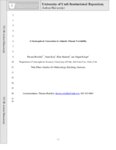 |
Reichler, Thomas J. | A stratospheric connection to Atlantic climate variability | It is well recognized that the stratosphere is connected to tropospheric weather and climate. In particular, extreme stratospheric circulation events and their dynamical feedback on the troposphere are known to play a major role1. However, what is not known to date is whether the state of the strat... | 2012-01-01 | |
| 4 |
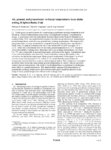 |
Chapman, David S. | Air, ground, and groundwater recharge temperatures in an alpine setting, Brighton Basin, Utah | Noble gases are useful tracers for constraining groundwater recharge temperature and elevation, critical in determining source areas of groundwater recharge in mountainous terrain. A monitoring network in the alpine Brighton Basin in the Wasatch Mountains of northern Utah, USA, was established to ex... | 2012-01-01 | |
| 5 |
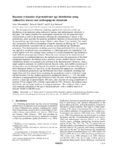 |
Solomon, Douglas Kip | Bayesian evaluation of groundwater age distribution using radioactive tracers and anthropogenic chemicals | The development of a Bayesian modeling approach for estimation of the age distribution of groundwater using radioactive isotopes and anthropogenic chemicals is described. The model considers the uncertainties associated with the measured tracer concentrations as well as the parameters affecting the ... | 2012-01-01 | |
| 6 |
 |
Chapman, David S. | Borehole temperatures and climate change: ground temperature change in south India over the past two centuries | Variations in surface g round temperature (SGT) at the Earth's surface diffuse downward in a predictable way causing systematic perturbations to the subsurface temperature field. The pioneering study of Lachenbruch and Marsh all [1986] in Alaska demonstrated that present-day borehole temperature-dep... | 2012-01-01 | |
| 7 |
 |
Reichler, Thomas J. | Breaking down the tropospheric circulation response by forcing | This study describes simulated changes in the general circulation during the twentieth and twenty -first centuries due to a number of individual direct radiat ive forcings and warming sea surface temperatures, by examining very long time-slice simulations created with an enhanced version of the Geop... | 2012-01-01 | |
| 8 |
 |
Zhdanov, Michael | Discussion and reply: comments on "electromagnetic geophysics: notes from the past and the road ahead" | The direct current and electromagnetic methods have been around for almost 180 years and have been applied successfully in mining, petroleum, geotechnical, engineering, environmental, groundwater, and tectonic studies. Over such a long period of time, it is possible to lose track of who the pioneers... | 2012-01-01 | |
| 9 |
 |
Steenburgh, William James | Episodic dust events of Utahs Wasatch Front and adjoining region | Episodic dust events cause hazardous air quality along Utah's Wasatch Front and dust loading of the snowpack in the adjacentWasatch Mountains. This paper presents a climatology of episodic dust events of the Wasatch Front and adjoining region that is based on surface weather observations from the Sa... | 2012-01-01 | |
| 10 |
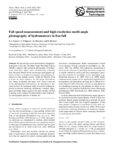 |
Garrett, Timothy J. | Fall speed measurement and high-resolution multi-angle photography of hydrometeors in free fall | We describe here a new instrument for imaging hydrometeors in free fall. The Multi-Angle Snowflake Camera (MASC) captures high-resolution photographs of hydrometeors from three angles while simultaneously measuring their fall speed. Based on the stereoscopic photographs captured over the two months ... | 2012-01-01 | |
| 11 |
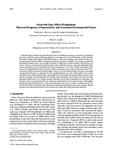 |
Steenburgh, William James | Great Salt Lake-effect precipitation: observed frequency, characteristics, and associated environmental factors | This climatology examines the environmental factors controlling the frequency, occurrence, and morphology of Great Salt Lake-effect (GSLE) precipitation events using cool season (16 September-15 May) Weather Surveillance Radar-1988 Doppler (WSR-88D) imagery, radiosonde soundings, and MesoWest surfac... | 2012-01-01 | |
| 12 |
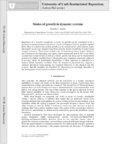 |
Garrett, Timothy J. | Modes of growth in dynamic systems | Regardless of a system's complexity or scale, its growth can be considered to be a spontaneous thermodynamic response to a local convergence of down-gradient material flows. Here it is shown how system growth can be constrained to a few distinct modes that depend on the time integral of past flows a... | 2012-01-01 | |
| 13 |
 |
Reichler, Thomas J. | Multidecadal drought cycles in the Great Basin recorded by the Great Salt Lake: modulation from a transition-phase teleconnection | This study investigates the meteorological conditions associated with multidecadal drought cycles as revealed by lake level fluctuation of the Great Salt Lake (GSL). The analysis combined instrumental, proxy, and simulation datasets, including the Twentieth Century Reanalysis version 2, the North Am... | 2012-01-01 | |
| 14 |
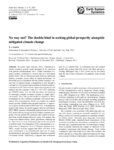 |
Garrett, Timothy J. | No way out? the double-bind in seeking global prosperity alongside mitigated climate change | In a prior study (Garrett, 2011), I introduced a simple economic growth model designed to be consistent with general thermodynamic laws. Unlike traditional economic models, civilization is viewed only as a well-mixed global whole with no distinction made between individual nations, economic sectors,... | 2012-01-01 |
1 - 25 of 14
